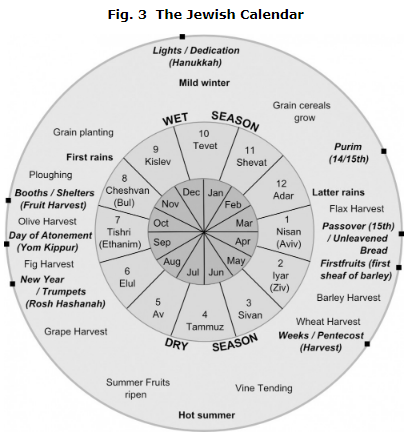
The rabbi may explain further that the New Year season lasts through Yom Kippur (the Day of Atonement), on the 10th of the month, the most solemn day of the whole year, when Jews attend special synagogue services. In ancient times the appearance of the new crescent after sunset, following several moonless nights, marked the beginning of the first day of each new month. The reason for this is that the Jews have a lunar calendar, now modified in form but originally reckoned by the moon. If we ask a rabbi the date of Rosh Hashana, he will explain that it is the first of the Jewish month Tishri, but that it falls on different dates in our September or October in successive years, since it comes approximately at the new moon. Those who have Jewish neighbors know that they celebrate their New Year’s Day, which they call Rosh Hashana, in the autumn. 1999‑2021 - All Rights Reserved.The Hebrew Calendar in Old Testament Times I. Hebrew Calendar compared to other calendarsĬopyright © Israel Science and Technology Directory.The expulsion of Jews from Spain in 1492 also falls on this date. – Tisha BeAv – תשעה באבĪv 9 – Fast of the Ninth of Av in the Hebrew calendar commemorates the destruction of the first and second Temples (the first by the Babylonians in 586 B.C.E. The first harvest was brought to the Temple on Shavuot. Shavuot means "weeks" as Torah was given 7 weeks after the Exodus from Egypt. Sivan 6 – Shavuot commemorates the giving of the Torah and the Ten Commandments to Israelites at Mount Sinai over 3000 years ago.


Iyar 28 – Jerusalem Day celebrates the liberation of Jerusalem during the Six-Day War. – Lag Baomer – ל"ג בעומרģ3rd day of counting the Omer. Iyar 5 – Israel Independence Day marks the Declaration of Independence of the State of Israel in 1948. Iyar 4 – Memorial Day in memory of the fallen soldiers of the Israel Defense forces and victims of Arab terrorism. Nisan 27 – Holocaust Memorial Day in remembrance of the 6 million Jews killed by the German Nazi regime and their collaborators. Nisan 15 – Pesach (Passover) holiday commemorates the Exodus of the people of Israel from ancient Egypt. Purim celebrated in Jerusalem and walled cities. – Purim – פוריםĪdar 14 – Purim holiday commemorates the annulment of the decree against the Jewish people in ancient Persia (Late 6th century B.C.E.). Shevat 15 – Tu Bishvat is also known as the New Year for Trees. Kislev 25 – Hanuka celebrates the rededication of the Temple in Jerusalem after the victory of the Maccabees over the Hellenistic (Greek) army. The concluding section of Torah is read followed by reading the first section of Genesis, symbolizing the continuing annual cycle of weekly Torah reading.

Tishrei 22 – Simhat Torah (Joy of Torah) marks the completion of the annual reading of the Torah. In memory, Jewish people are commanded to build and live in temporary dwellings for seven days (Leviticus 23:33). Tishrei 15 – Sukkot holiday commemorates the forty years of wandering of the People of Israel in the desert after the exodus from Egypt. Tishrei 10 – Yom Kippur – The Day of Atonement.

Tishrei 1-2 – Rosh Hashana – The Jewish New Year marks the beginning of ten days of repentance culminating with Yom Kippur. Most holidays are celebrated on the same day of the Hebrew calendar every year. In the Hebrew calendar, a "day" begins and ends at sunset rather than at midnight. Select a year:Īll Jewish holidays begin the evening before the date specified. The list of holidays below is for the year 5782 – תשפ"ב.


 0 kommentar(er)
0 kommentar(er)
